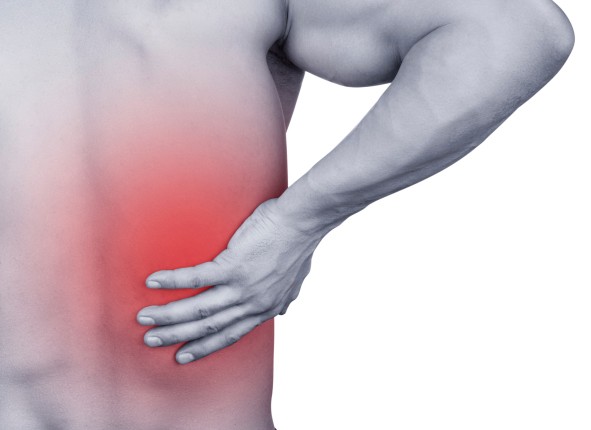In a world where we text, e-mail, Facebook, Instagram, and Tweet, sometimes we forget that a quick phone call to our medical practitioner can be a really good idea. A profound idea indeed, as it could save you time and money, provide peace of mind, and improve your overall approach to health. With regard to aches, pains, and injuries, “it will just go away” is the common approach of many extreme athletes and sports enthusiasts. I’ve been guilty of it myself. While the “it will just go away” mindset is a laudable hope, it is not always an effective approach to proper healthcare.
Good Communication Correlates with Good Care
Good communication channels between athletes and their healthcare practitioners are extremely important. Do not be afraid to call your medical professional’s office and ask if they have hours set aside to take and return phone calls regarding specific questions you may have. For many athletes, the answer to the ache, pain, or dreaded injury question is a phone call away. In most cases, it’s free. You should strive to communicate with them about your general health. And, you should absolutely call them to discuss the persistent pain you are experiencing, or if you think you may have suffered an injury. If the doctor is unavailable, a member of their staff is usually charged with taking such calls and getting back to you in a timely manner.
Whatever you do, do not put off seeking care. It is a mistake. I cannot count how many times patients have limped into my office after being afflicted with the same pain for weeks or months. My question is nearly always the same, “Why didn’t you call when this first started occurring?” It is human nature, it seems, to just hope that whatever it is, will simply go away on its own. Indeed, the body is miraculous at healing and repairing itself at times. Many minor aches and pains can just seem to fade away quickly. It is normal. But, occasionally aches and pains linger. When this happens, it is time to get some professional medical advice, and perhaps some treatment.
I hear from athletes all the time, “But I do not want to interrupt my training. I know if I go to the doctor’s office, I will have to stop for a while. It will set me back.” My response is usually along these lines: “You can have a short interruption in training now or when your condition worsens you can have a long-term interruption accompanied by extended treatment and additional costs of both time and care.” When put this way, an athlete can clearly choose the option he or she prefers.
What Not To Do
Let me be clear, gladiators: none of the following are acceptable–ever! Do not avoid care in place of consulting your healthcare practitioner. Do not delay care in place of consulting your healthcare practitioner. Do not go to Facebook or Twitter to ask your friends what they think about your ache, pain, or injury in place of consulting your healthcare practitioner. Do not go to a website for medical advice in place of consulting your healthcare practitioner. These approaches are decidedly not smart.
What to Do
Every athlete needs to be self-aware and know when to pick up the phone to ask a question or schedule an appointment. What we mean by the term self-aware is knowing how much your body is able to take training-wise. Before you do a workout, you should have a rough idea of how sore you will be afterward. Know your limits, abide by those limits, and listen to your body. Aches and pains are common after strenuous exercise or a new training regimen, but they should go away quickly. When aches and pains do not subside, there may be something more serious happening. If pain lingers or has been prolonged, we usually refer to it as persistent pain. If you are experiencing persistent pain after exercise or training, contact your healthcare practitioner. For many of us, we require a more down-to-earth example. Schedule an appointment with your healthcare provider if you have casually mentioned to your coworker or workout partner that your back hurts and they reply, “Yeah, you’ve told me that four times this week alone.”
Possible Signs of More Than an Ache or Pain
- Don’t Know. Not sure if an ache or pain is persistent or if it is even an injury? Simple. Pick up the phone and call, or request a phone call from your medical professional.
- Pain Lingers. If, after exercise, aches or pains of any kind linger after two or three days of rest and light daily activity, you probably should see a medical professional or–you guessed it: call. At the onset of most aches or pains from exercise or intense training, the best plan is to take a few days off from exercise activities. If you have taken several days to rest and the symptoms remain, return, or worsen, it’s time to seek care or at least call.
- Recurring Inflammation. Many endurance athletes are accustomed to aches and pains or both along their training path and tend to “push through” them. But, if you find that over-the-counter anti-inflammatory drugs are not offering any relief, and you cannot seem to “push through,” get checked out by a medical provider.
- Sharp or Severe Pain. If your pain started within the last 12 hours, is localized in one area, and feels sharp or severe, it is time to seek care. When pain is sharp and centralized, this can be indicative of serious injury such as a pulled muscle, repetitive use or over use injury, or even a stress fracture. Get checked out by a medical provider.
- Are there noticeable or visible changes? If you notice that swelling or bruising and you do not recall hurting yourself, you should probably see a medical practitioner. Pain is sometimes the last symptom to show up, and at times, it can take days before you know you have actually hurt yourself. By then, the problem could have worsened. For instance, if not given proper or timely treatment, a torn muscle may become extremely difficult to repair and rehabilitate.
- Does your range of motion seem sluggish or inhibited? If while warming up, or even mid-stride, you feel like your mobility or range of motion is not where it was the last time you were doing that activity, you should get it checked out. The last thing you want is to be training for something and hit a roadblock when you could have had whatever was bothering you worked out in one or two visits to your medical provider.
If, after reading any of these, you say, “This sounds like me,” seek care, or at least call.
How do I know which medical office to call?
If you have a medical emergency, always call 911. For injuries such as broken bones, wounds needing stitches, concussions, etc., you must seek care immediately with your local emergency room, urgent care facility, or primary care physician. For sports or training-related aches, pains, sprains, strains, etc., contact your primary care provider, or in some cases a chiropractor or physical therapist that frequently provides care to athletes. It is important to remember that most any healthcare professional should be able to quickly point you in the right direction with regard to the most appropriate practitioner for care if and when needed.
Final Thoughts
Our goal is to simply help athletes and sports enthusiasts become aware of when an ache or pain is no longer just an ache or pain, but rather a potentially serious injury. Furthermore, our goal is to encourage athletes and sports enthusiasts to communicate often and effectively with their healthcare practitioners. If you are worried about something that has been bothering you, take some time out of your busy schedule and see your healthcare practitioner, or at a minimum make or request a phone call. I always encourage athletes to get checked out soonest. It just might save you a lot of time and money down the road. If nothing else, it will give you peace of mind during intense training and exercise.having good lines of communication with your healthcare practitioners is extremely important
Remember, having good lines of communication with your healthcare practitioners is extremely important. For the best answer, pick up the phone and call one of these professionals: your primary care physician, your chiropractor, your physical therapist, your doctor of osteopathy, etc. Be very specific when talking to your healthcare providers in explaining what you were doing when you first experienced the problem and how long it has been bothering you. Also tell them about your recent activity levels and future expected activity levels. If you are planning to run a half marathon in two weeks, tell them!
Disclaimer: The information contained herein is intended solely for the general information of the reader. It is not to be used for treatment or therapy purposes, but rather for discussion with the patient’s own physician or healthcare practitioner. The information presented here is not intended to diagnose health problems or to take the place of professional medical care. The information contained herein is neither intended to dictate what constitutes reasonable, appropriate or necessary care for any given health issue, nor is it intended to be used as a substitute for the independent judgment of a physician or healthcare practitioner for any given health issue. The information herein is not intended to replace consultation with a medical professional. This information does not establish a doctor-patient relationship. Individuals should consult a qualified healthcare provider for medical advice with regard to individual health questions. The information contained herein should not be relied upon as being comprehensive or error-free. The objective is to inform and educate regarding the importance of communicating and consulting with healthcare provider(s) with regard to aches, pains or injuries. This information is provided with no warranties, express or implied.
Related Posts
« New York City—Fashion Week Money and the Modern Man—Part Two »
















